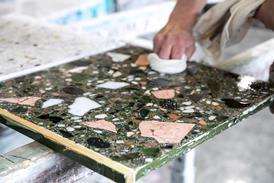Simon Randall on why Reits are good for you
Lawyer Simon Randall is convinced that the new property investment bodies – or Reits – launched on 1 January, will be a lucrative source of funding for regeneration. Randall is a partner at law firm Lawrence Graham but is also the chair of Kent-based Broomleigh Housing Association. He hopes to launch the “housing association Reit” this autumn with 4,000 homes bought from Broomleigh and 17 other associations with around £200m in private funding.
• How will it work? Reits are stock exchange-quoted vehicles in which anyone can invest. Reits then have to invest in real estate. Reits can buy existing housing stock; they can build new housing; and they can buy properties that require refurbishment. 75% of the activities of our Reit will have to be the provision of rented housing and this portion will be tax-free… but the other 25% isn’t tax exempt.
• How important will Reits be for regeneration? This has the potential to be huge. Our Reit will look to regenerate areas as its main aim. So, for example, if it has £200m in funds, then it could borrow £50m and use this to build or refurbish homes. These homes would then pass into the 75% that were rented and the process would begin again.
• What housing will your reit provide? Intermediate housing such as market rented, keyworker or shared ownership. The yields for investors on these types of homes are higher and therefore more attractive to investors.
• What is the advantage of HAs doing a Reit? The release of funds for further development. Although associations will sell intermediate homes to the Reit, they will be able to use the funds to build more social housing.
Source
RegenerateLive





















No comments yet